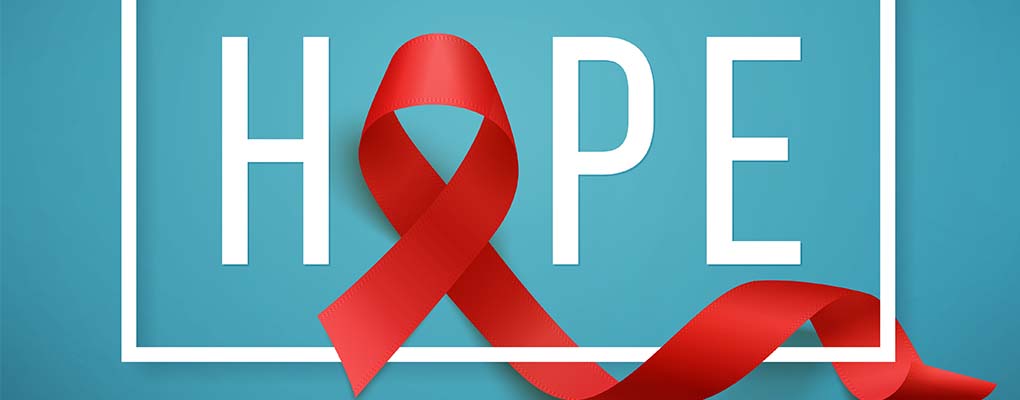
HIV/AIDS: 40 Years of Progress
Published: 12-13-2021 | 6 MIN READ | Author: Prism Health North Texas
Every year on December 1st, we recognize World AIDS Day. This year marked the 33rd anniversary or World AIDS Day and the 40th anniversary of the first reported AIDS cases in the United States.
In the past HIV/AIDS was thought to be a disease that was only spread among the homosexual population in the United States. Although it is true that the virus disproportionately affects men that sleep with men, the truth of the matter is that HIV does not discriminate. Like all other sexually transmitted transmissions, ANY person that is sexually active is susceptible to HIV.
New HIV cases in the United States is on a downward trend. The rate fell 8% from 2015 to 2019. 34,800 new HIV transmissions were diagnosed in the U.S. when last reported in 20191. The main difference between the start of the epidemic and today is that, with the advancements in medicine, an HIV diagnosis is no longer a death sentence. People are not only living with HIV, they’re thriving! Here’s a look at where we’ve been and where we are in finding a cure for HIV/AIDS:
1980s
In June of 1981, the first cases of AIDS are reported by the CDC.
In May, the term “GRID” (Gay-Related Immune Deficiency) starts being used. The term fuels the public’s misconception that the virus only affects gay men even though quite a few cases have been reported in women, babies, and adolescents.
337 cases of severe immune deficiency are reported in the United States and by the end of the year and 130 of those people have died.
The term “AIDS” (Acquired Immune Deficiency Syndrome) is first used by the CDC in September of 1982 and is defined as, “A disease at least moderately predictive of a defect in cell-mediated immunity, occurring in a person with no known cause for diminished resistance to that disease.”
In March of 1983, clues that AIDS can be spread through sexual interaction or contact with blood are reported.
Congress passes the first bill for funding allocated to AIDS research and treatment that May.
On May 20, 1983 Dr. Françoise Barré-Sinoussi and colleagues report the first finding of a retrovirus that may cause AIDS.
In July, the National AIDS Hotline is open and fields 8,000-10,000 calls a day by the end of the month.
The CDC identifies all the ways AIDS can be transmitted in September, and specifically outlines that only intimate contact with bodily fluids can lead to transmission.
In April of 1984, Dr. Robert Gallo and colleagues at the National Cancer Institute report definitive proof of the retrovirus that causes AIDS and develop a blood test to identify the virus.
In January of 1985, the definition of AIDS is revised to state that it is caused by the human immunodeficiency virus and in March the first commercial blood test that can identify HIV is developed by the FDA.
That summer actor Rock Hudson and Indiana teenager, Ryan White, become the first majorly publicized faces of AIDS affecting larger populations of America.
By the end of the year, HIV is reported in each region of the world.
Prism Health North Texas (then named AIDS Arms Network) opens its doors in 1986 during the HIV/AIDS crisis in North Texas.
In October of 1986, the Surgeon General reports AGAIN that the HIV cannot be spread casually and can be prevented with the use of condoms and HIV testing.
AZT, the first AIDS medication is approved by the FDA in March of 1987.
The U.S. Public Health Services places a travel ban on HIV-positive immigrants in May of 1987 and mandatory testing is required of all visa applicants.
In 1988, the US government makes great strides in providing the public with education on how AIDS can be transmitted and prevented.
The first World AIDS Day is commemorated on December 1, 1988.
In 1989, community health centers are provided funding for HIV counseling and treatment. This is the beginning of the Ryan White CARE Act that funds community clinics like Prism Health North Texas.
There are 100,000 reported cases of AIDS in the United States by the end of the decade.
1990s
In July of 1990, the Americans with Disabilities Act (ADA) is enacted and people living with HIV/AIDS are protect from discrimination.
The CDC adds new conditions to the list of indicators of AIDS in 1993. As a result, more women and injection drug users are diagnosed with AIDS.
In 1995, the FDA’s approval of the first protease inhibitor paves the way for highly active antiretroviral therapy (HAART).
On June 27, 1995, the first National HIV Testing Day is launched.
By October 31, 1995, the number of reported cases of AIDS in the U.S. reaches 500,000.
In 1996, the number of reported cases of AIDS in the United States declines for the first time since the beginning of the epidemic.
In 1997, the AIDS-related death rate in the U.S. declines by 47% due in large part to the wide use of HAART. The downside, however, is that due to the increase of people taking protease inhibitors, viral resistance to the drug also increases.
Later the same year, it’s estimated that 30 million people of all ages, genders, sexual-orientations, and ethnicities around the world have AIDS.
The disproportionate transmission rate of the black community is addressed in 1998. This causes black leaders of the United States to request AIDS be addressed as a state-of-emergency in their communities.
In February 1999, National Black HIV/AIDS Awareness Day is launched to raise awareness, care, and treatment of HIV/AIDS in minority communities.
Early in the year, the World Health Organization (WHO) estimates that 33 million people world-wide are living with HIV/AIDS and that 14 million have died from AIDS-related causes.
2000s
Throughout the 2000s world health leaders such as the WHO, United Nations Security Council, and the “Group of Eight” (G8) work toward reducing the global HIV transmission rate.
Negotiations call for a reduced cost of HIV/AIDS medication for developing countries.
The CDC estimates that more than half of the U.S. HIV transmission rate is due to people not knowing they have HIV, which pushes FDA approval of rapid testing that can be administered orally and without costly, specialized equipment.
In 2007, the number of people that have died from AIDS-related illness in the U.S. reaches 565,000 according to the CDC.
By the end of the decade parts of the world see decreases in their HIV transmission rate, however, other parts of the world see increases.
2010s
On January 4, 2010, the U.S. travel and immigration ban on people living with HIV is lifted.
In 2010, the National Institute of Health releases the results of a study that show a daily dose of HIV medication reduces the risk of contracting HIV. This opens the door for pre-exposure prophylaxis (PrEP) to become an obtainable and highly effective way of preventing HIV.
The FDA approves the first on-the-spot, at-home, HIV test in 2012.
In July 2012, the International AIDS Conference returns to the U.S. for the first time since 1987 and the lifting of the HIV-positive travelers’ ban.
Also, in 2012, the FDA also approves the PrEP medication, Truvada®, as a way for HIV-negative adults to reduce their risk of contracting HIV if exposed to the virus during sex.
On March 4, 2014, the first phase of the European research study called PARTNER, releases the results of their study. The study found that if an HIV-positive person was undergoing antiretroviral therapy and had an undetectable viral load, they did not transmit the virus to their HIV-negative partner.
In 2017, the Bill and Melinda Gates Foundation announced it plans to invest $140 million in a PrEP tool that administers the medication over a long period of time. This will eliminate the need for a PrEP pill to be taken on a daily basis in order to prevent HIV.
In 2018, the U=U message (Undetectable=Untransmittable) is created as the result of a study out of Thailand. The findings reinforce the fact that an HIV-positive person can reach and maintain an undetectable viral load and not transmit the virus to an HIV-negative partner.
2020s
On November 19, 2020, the CDC published a study finding that HIV-related deaths in the United States were cut almost in half from 2010 to 2017. The positive result was likely caused by early diagnosis and treatment of new HIV cases.
As of 2020, 79.3 million people are living with HIV and 36.3 million people have died from AIDS-related illness over the course of the epidemic2.
On January 12, 2021, the U.S. Department of Health and Human Services released a 10-year plan aimed at reducing new HIV-transmissions by 90% by the year 2030.
The FDA approved the first injectable pre-exposure prevention treatment for HIV (PrEP) in December 2021.
Over the last 40 years great strides have been made in HIV prevention and treatment. The hope for an official vaccine and cure for the virus is a global finish line that medical professionals hope to cross soon.
This is an extremely simplified and condensed timeline of HIV/AIDS-related events. Please click here for a more comprehensive and detailed list of events.
1 https://www.hiv.gov/hiv-basics/overview/data-and-trends/statistics
2 https://www.unaids.org/en/resources/fact-sheet



